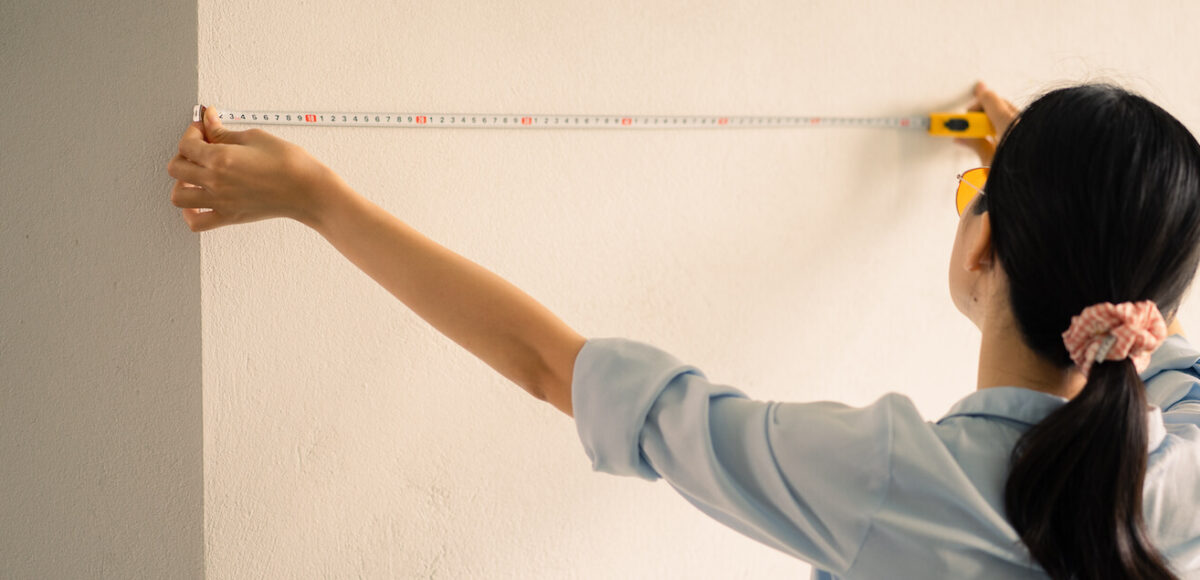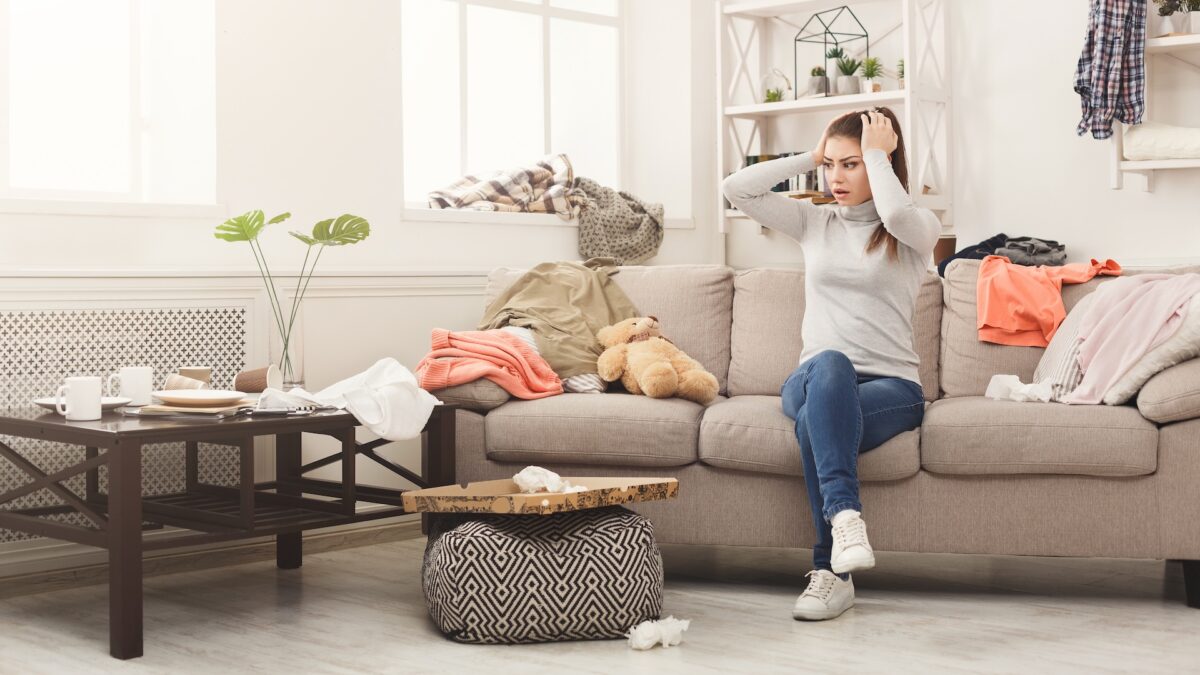Whether you’re planning to sell your home and buy a bigger one with a partner, rent a new apartment on your own, or move to a new neighborhood with roommates, it’s essential to think through how much space you want and need. But it can be hard to know what you’re looking for, particularly since a “normal” house or apartment size can vary based on where you live.
You’re probably asking yourself a lot of questions. How big of a house do I need? How big is a usual house? What are my priorities while I look for my next home?
Need some help? Let’s discuss a few things you should consider regarding apartment or house size.
How Big Is a Square Foot, and How Much Does Square Footage Matter?
Simply put, a square foot is 12 square inches of space, and it’s the most common unit of measurement used to note the size of a home or building in the United States. To calculate the square footage of a room, you simply multiply the room’s length by its width. The same is true for an entire home.
You’ve likely seen real estate listings that show the total square footage of a house, and while this number does give you a good idea of the house size, it doesn’t tell the whole story. For example, a home may seem significant on paper, but it may have a less-than-ideal family house layout that puts a damper on functionality. Or, it might seem small when you look at the square footage, but an open floor plan or window feature could make it feel much bigger.
For these reasons (and more), always look beyond the square footage and consider the functions you need and want from your next home. If possible, work with a real estate agent who can help you get a tour of a home, inside and out, before you rent or buy.
How Big of a House Do I Need?
There are several factors to consider when considering how big of a home you want or need, including price, family size, and more.
1. Think about your budget.
Depending on your budget and the cost of living in your desired neighborhood, home prices could limit your space. If you’re moving to a popular area, you might pay above-average prices for below-average house dimensions, like a 1,000-square-foot home or apartment. Keep things realistic with what you can genuinely afford, and be prepared to look in other neighborhoods if it becomes apparent your budget can’t get you the space you need.
2. Think about the number of people living in your home.
More residents in a home generally mean you need more space, but there are a lot of gray areas! When considering what size home to look for, ask yourself questions such as:
- Does every family member need their own bedroom?
- Can siblings share a bathroom?
- Do you need a full laundry room, or would a laundry closet work?
- How much storage space does each person need for their belongings? How much storage do you need for shared family items?
Much like maintenance goes up with house size (more on this later), the space you may need typically increases with more people living in your home.
3. Think about which hobbies and activities need devoted spaces.
Do you work from home? You’ll need an extra bedroom or dedicated space for a home office. Have a hobby that requires room to spread out? Consider where you’ll do this activity in your new home and where you’ll store the items you need. Have a colossal wardrobe you’re not willing to pare down? Add a walk-in closet to your must-haves list. Consider your everyday life in your current home, and be sure to factor in any activities you or your family members engage in regularly as you’re hunting for a new place.
4. Think about the time, energy, and money you can devote to upkeep.
The average size of a house in the US is around 2,200 square feet. For reference, that’s approximately the size of 5.5 two-car garages. And while that may be the normal house, that’s a considerable amount of home to keep up with! Consider how many bathrooms you’re willing to clean, how much yard space you’re comfortable mowing, and how much interior and exterior maintenance you can realistically keep up with. Is a 1,000-square-foot house good for minimal upkeep? Sure, but it might feel cramped. Conversely, a considerably larger place could drain your resources quickly. Always consider the time, money, and energy you will put into upkeep!
5. Think about how much you’re willing to furnish.
Unless you take minimalism to the extreme, you won’t want completely empty rooms in your home. And as with maintenance and upkeep, the bigger the house, the more you need to furnish it. Whether you need a bigger set for your primary bedroom or all-new living room furniture, consider shopping for secondhand furniture to keep your budget in check without sacrificing quality.
6. Think about energy costs for the home.
No matter where you live, a bigger home costs more to heat and cool than a smaller one. And in regions with extreme summers or winters, energy costs can add up quickly! You certainly don’t want a home that’s too small for your circumstances, but remember that heating and cooling unused rooms isn’t ideal, either.
Find Furnishings For Your Optimal Floor Plan
When it comes to furnishing your home, the process can often feel overwhelming, especially if you’re starting from scratch. However, it doesn’t have to be as difficult as you might think. By taking a few simple steps and making the most of the resources available to you, you can easily create a comfortable and stylish living space that you’ll love spending time in.
One great starting point is to head to your local CORT Furniture Outlet, where you’ll find a wide range of furniture, decor, and more to suit any taste and budget. Whether you’re looking for a new sofa, a stylish area rug, or decór items to spruce up your space, you’re sure to find something you love.
If you prefer to shop online, CORT has you covered there, too. With a huge selection of items available for purchase on their website, you can easily browse and select the perfect pieces from the comfort of your own home. And with up to 70% off original pricing on new and gently used items, you’ll be able to get everything you need without breaking the bank.
When you’ve found the perfect pieces for your home, CORT makes it easy to get them home quickly and efficiently. With same-day pickup available, you won’t have to wait long to start enjoying your new furniture and decor.
So whether you’re moving into a new space or just looking to update your current decor, CORT Furniture Outlet is the perfect place to start. With their unbeatable selection, affordable prices, and convenient shopping options, you’ll be well on your way to creating the home of your dreams in no time.






